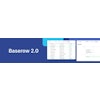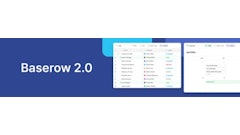
In 2025, distributors are up against a wall. Delayed shipments. Sudden cost spikes. Tariffs that land like surprise invoices. The old playbook—react, scramble, repeat—can’t keep up with today’s volatility.
What’s moving the needle? Sharper decisions. Faster responses. Data you can act on. Predictive and prescriptive analytics turn chaos into clarity—and guesswork into growth.
Yesterday’s playbook is failing
One unexpected delay. One sourcing breakdown. One misjudged forecast. That’s all it takes to unravel profits.
Yet many distributors are still flying blind—operating on lagging reports, manual processes, and gut instinct. But in a market this volatile, speed isn’t a luxury. It’s survival.
Today’s winners don’t just react. They plan, pivot, and move with precision—because they know what’s coming next.
Imagine this
You spot a demand spike two weeks before it hits. You realign your inventory before a stockout. Your pricing adjusts automatically to protect margins. And when a supplier hits pause, you already have a backup plan in motion.
That’s not a dream—it’s analytics in action. Predictive tools show what’s coming. Prescriptive tools tell you what to do about it. Together, they give distributors a serious edge.
The real cost of flying blind
Being reactive is expensive.
Unpredictable costs. Slower lead times. Mounting inefficiencies. These are no longer outliers—they’re daily obstacles. Meanwhile, manual planning and siloed systems keep teams inefficient and uninformed. And when late shipments and poor service pile up, so do customer complaints—and churn.
Companies that stay reactive don’t just lose margin. They lose market share.
Forecast smarter. Sell more. Waste less.
Predictive analytics is your radar. It identifies trends before they become problems, aligns inventory with real demand, and helps eliminate the drag of excess stock.
According to Acropolium, one distributor saw a 15% drop in excess inventory and a 10% jump in sales simply by syncing stock levels with smarter forecasts. That’s the impact of aligning strategy with insight—not instinct.
Better forecasting also means more targeted promotions, optimized pricing, and better service—each a lever to increase profitability.
Think ahead. Act fast.
Prescriptive analytics goes further—delivering not just data, but direction.
It simulates what-if scenarios, surfaces the best responses, and turns uncertainty into action. Whether you're navigating a shipping delay or reevaluating sourcing due to rising costs, prescriptive tools help you make the right move—faster.
Stop leaks. Speed up. Save big.
Tariffs and delays get headlines, but the biggest profit killers are often hidden inside your own processes.
Analytics exposes bottlenecks, redundant workflows, and inefficiencies that quietly drain margin. Prescriptive insights then guide action: automate approvals, reassign labor, rebalance inventory. It’s not just about reacting faster—it’s about eliminating friction altogether.
Some AI-powered supply chains do this at scale, using data to fine-tune fulfillment and cut waste. You don’t need a big-box retailer’s budget, but adopting their mindset is essential.
Predict what’s next. Stay ahead.
Staying ahead in distribution isn’t just about reacting faster—it’s about seeing what’s coming before it hits. With predictive analytics, distributors can proactively manage margins, spot risks, and prioritize the right actions—without sifting through spreadsheets.
Proactive distributors are winning
Those who lean into analytics are pulling ahead—fast. They’re seeing stronger margins through smarter pricing strategies and reduced carrying costs. They’re making faster, more confident decisions powered by real-time data. Their customers are sticking around longer, too, thanks to consistent, responsive service that meets expectations. And perhaps most importantly, they’re building a smarter internal culture—one where data and insights guide the way.
In a market this competitive, those advantages aren’t just nice to have—they’re essential. The gap between data-driven organizations and those still relying on outdated methods is widening. Staying in the race means stepping up your analytics game.
Don’t just react. Take control.
If you’re still relying on spreadsheets and postmortems to guide critical decisions, you’re not alone, but it’s no longer enough. Today’s challenges require a forward-looking strategy, not a rearview approach.
Start by evaluating your data. Is it centralized, clean, and ready for action? Then equip your team with tools that do more than report—tools that guide. And finally, stress-test your strategy before the next disruption hits, so you’re ready, not scrambling.
See what’s coming. Act with clarity. Grow with confidence.



















